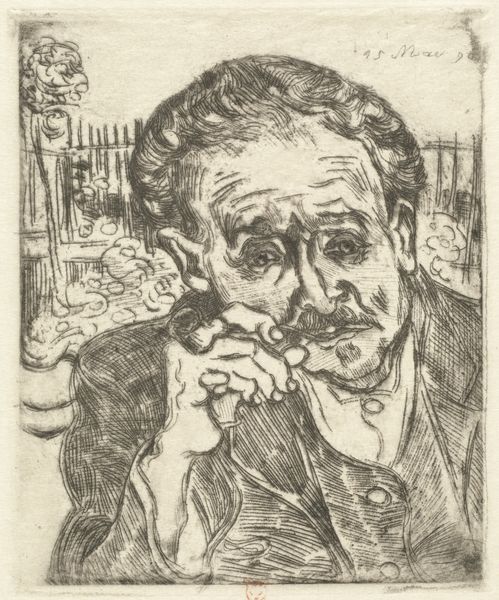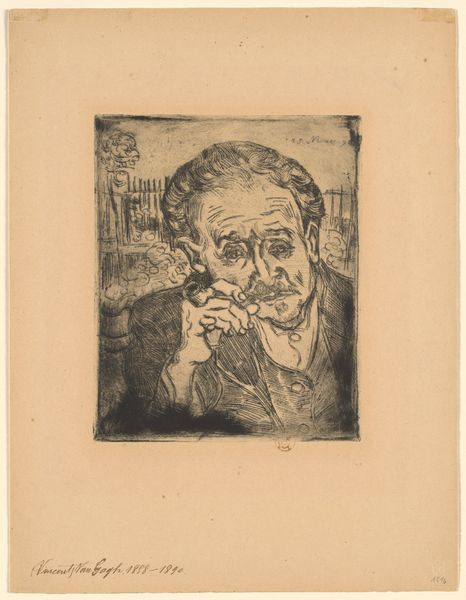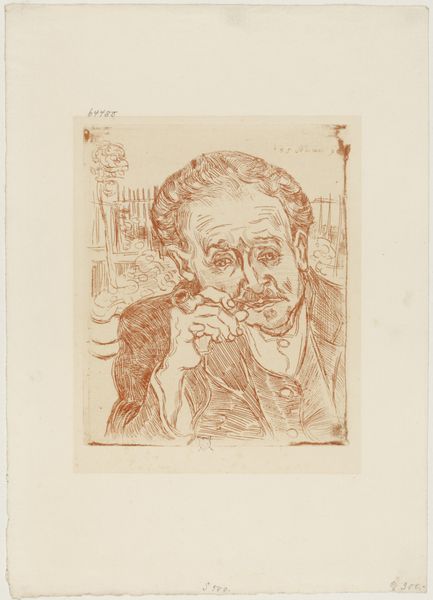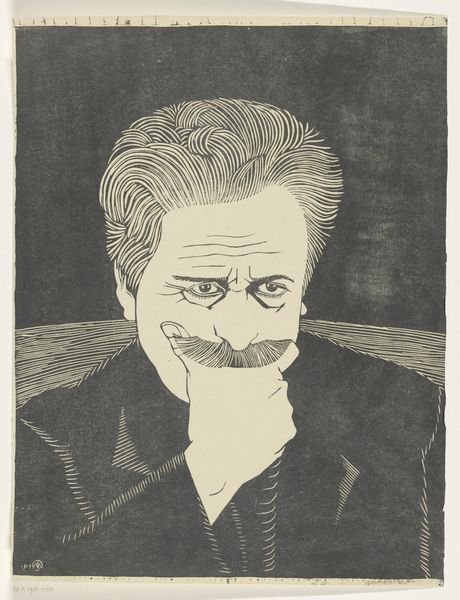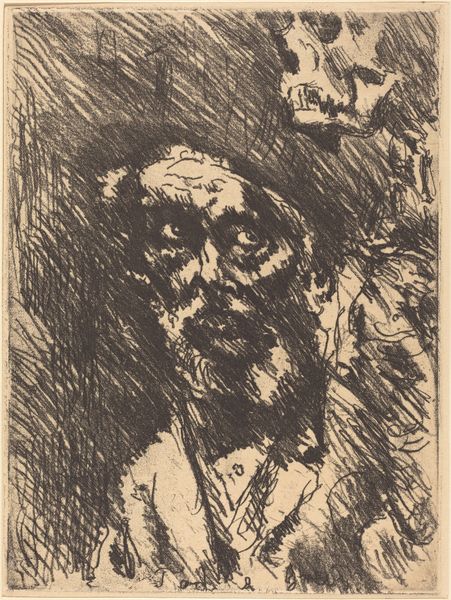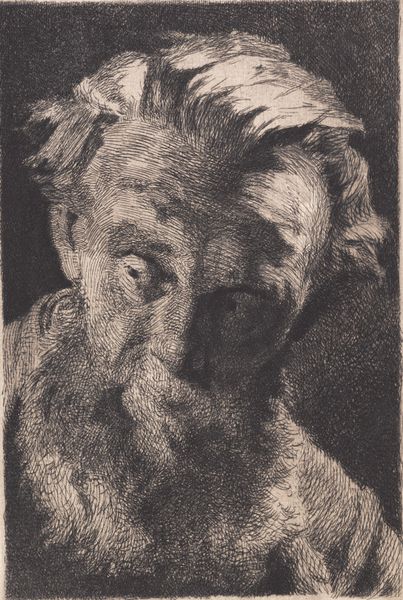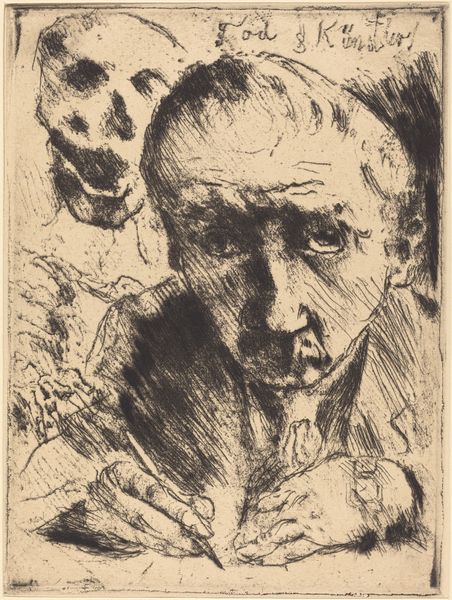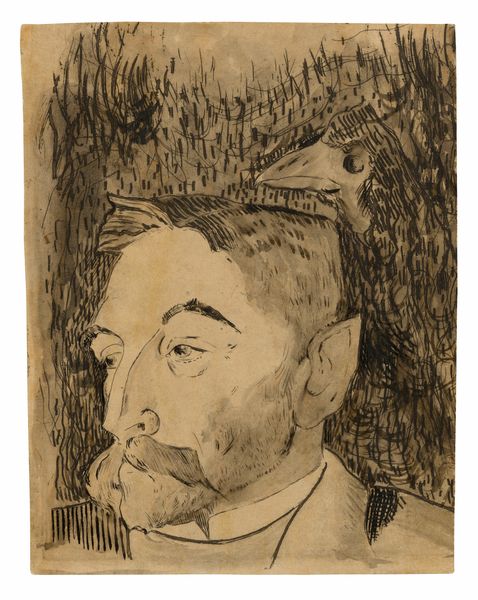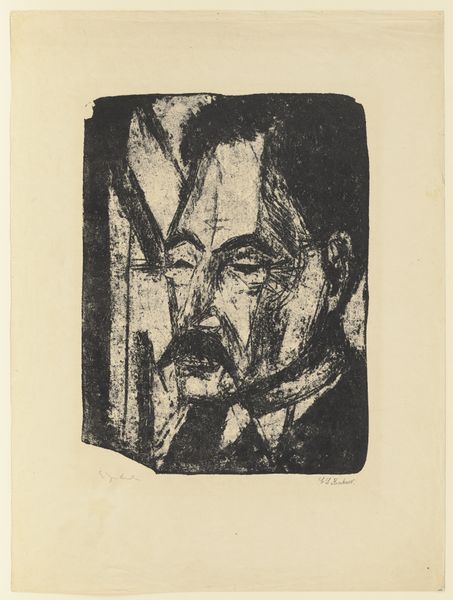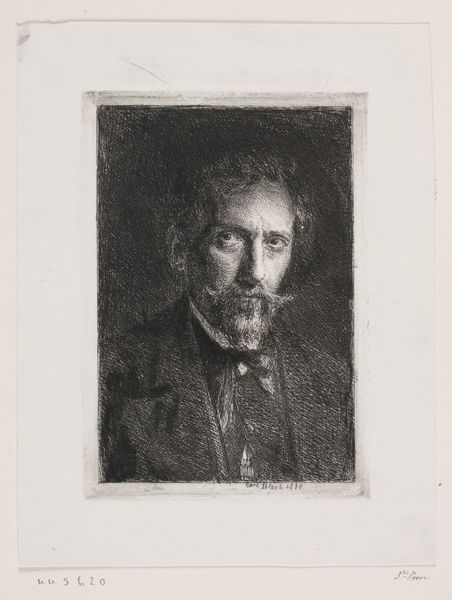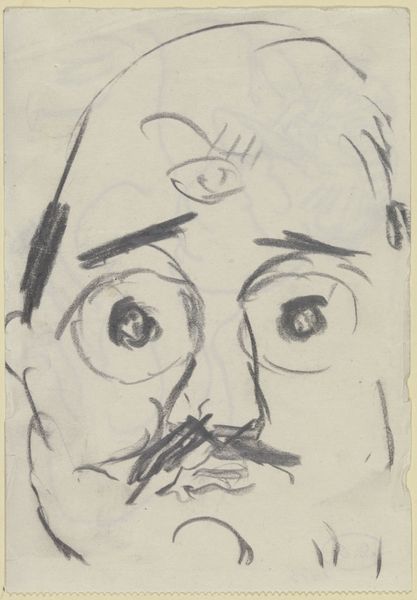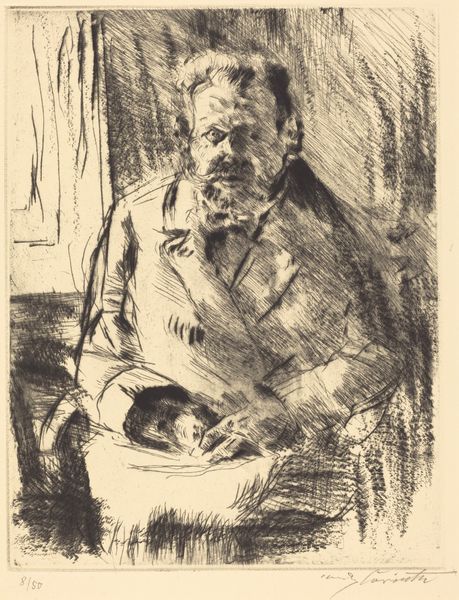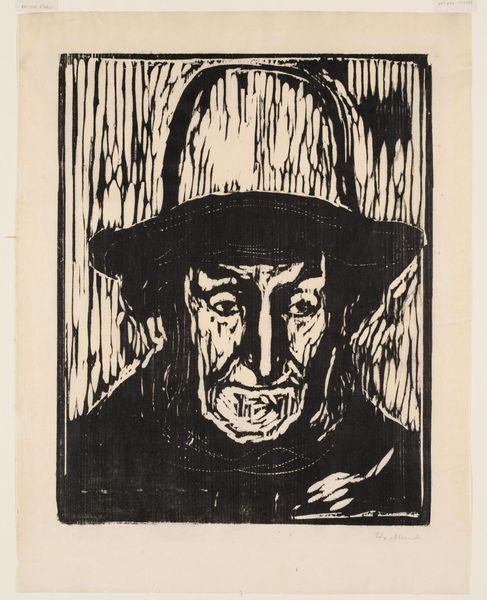
drawing, print, etching, paper
#
portrait
#
drawing
#
self-portrait
# print
#
impressionism
#
etching
#
paper
#
portrait drawing
Dimensions: 182 × 148 mm (image/plate); 205 × 172 mm (sheet)
Copyright: Public Domain
Curator: The Art Institute of Chicago holds a rather intimate portrayal executed by Vincent van Gogh: a drypoint etching and aquatint crafted in 1890, titled "Portrait of Dr. Gachet." Editor: Oh, wow, my first thought? Melancholy. Intense, but weighted down, like the man’s very spirit is etched into that paper. Curator: It's fascinating, isn't it? Unlike the painted portraits, which are so vibrantly colored and almost manic, this print version strips everything back to the bone. It almost feels like a study in pure psychological torment through line and tone. The lines are so frenetic, yet they convey such weariness. Editor: It really challenges the common, romanticized view of Van Gogh's mental health struggles, doesn’t it? The swirling lines almost feel like they're imprisoning Dr. Gachet within his own thoughts. You can read it as commentary on the doctor's profession itself; how being a confidant can take its own toll. Curator: It could be read that way, absolutely. The somber mood has even sparked speculation about Gachet's own health and temperament, even before the print was pulled. This all ties back to Vincent's feelings of dependency and desperation at the end of his life. Editor: Absolutely. This reminds me of Foucault's analysis of power dynamics within the asylum—Van Gogh, the patient, creating this powerful, albeit distressed, representation of his caregiver. It speaks volumes about their complex relationship, especially considering the artist had been admitted into a psychiatric institution for mental-health support and care at the time of its creation. Curator: You bring up such a relevant point. Even the pose, Dr. Gachet's head resting on his hand...is it supportive, or burdened? Van Gogh so expertly creates a sense of ambiguity that pulls you into their story, a sense of questioning—where do our social and cultural narratives intersect, and at what personal cost? Editor: This isn't merely an image; it's a multilayered story of vulnerability, social structures, and mental anguish, captured through the raw immediacy of printmaking. It truly embodies what is meant by ‘art in service’. Curator: It's a haunting piece, resonating far beyond its physical dimensions. One can truly spend a great deal of time observing it, looking closely, seeing, contemplating, and considering. Editor: Indeed—a powerful and challenging work, begging for sustained attention.
Comments
No comments
Be the first to comment and join the conversation on the ultimate creative platform.
